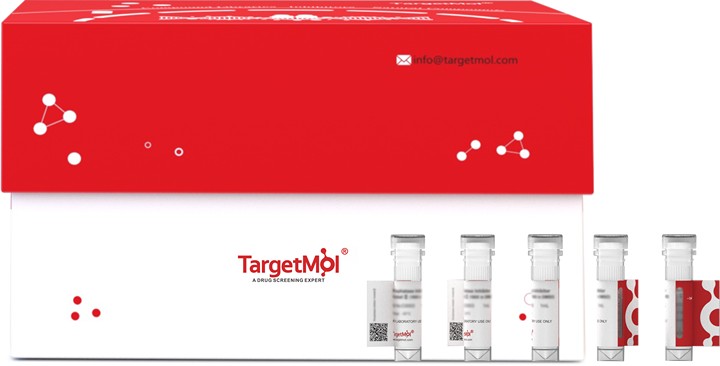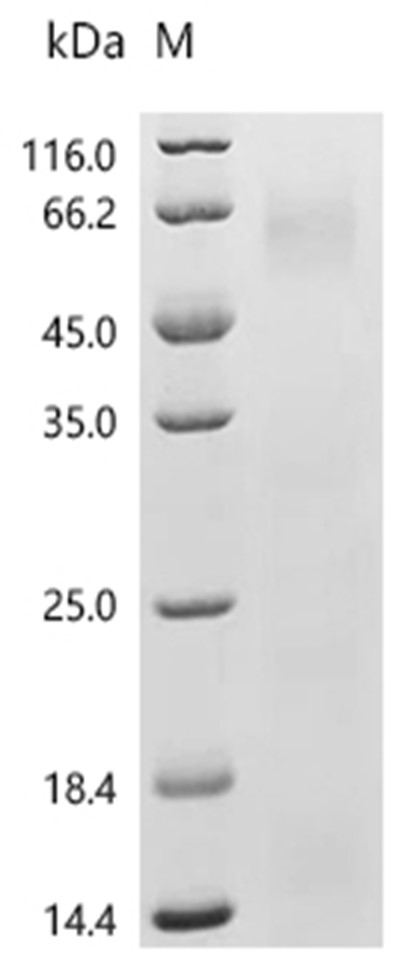Shopping Cart
Remove All Your shopping cart is currently empty
Your shopping cart is currently empty
EIF2AK2 Protein, Human, Recombinant (His) is expressed in yeast with N-6xHis tag. The predicted molecular weight is 64.0 kDa and the accession number is P19525.

| Pack Size | Price | USA Warehouse | Global Warehouse | Quantity |
|---|---|---|---|---|
| 5 μg | $86 | 20 days | 20 days | |
| 10 μg | $138 | 20 days | 20 days | |
| 20 μg | $231 | 20 days | 20 days | |
| 50 μg | $348 | 20 days | 20 days | |
| 100 μg | $480 | 20 days | 20 days | |
| 200 μg | $743 | 20 days | 20 days | |
| 500 μg | $1,330 | 20 days | 20 days |
| Biological Activity | Activity has not been tested. It is theoretically active, but we cannot guarantee it. If you require protein activity, we recommend choosing the eukaryotic expression version first. |
| Description | EIF2AK2 Protein, Human, Recombinant (His) is expressed in yeast with N-6xHis tag. The predicted molecular weight is 64.0 kDa and the accession number is P19525. |
| Species | Human |
| Expression System | P. pastoris (Yeast) |
| Tag | N-6xHis |
| Accession Number | P19525 |
| Synonyms | Tyrosine-protein kinase EIF2AK2,Protein kinase RNA-activated (PKR;Protein kinase R),PRKR,PKR,p68 kinase,P1/eIF-2A protein kinase,Interferon-inducible RNA-dependent protein kinase,Interferon-induced, double-stranded RNA-activated protein kinase,Eukaryotic translation initiation factor 2-alpha kinase 2 (eIF-2A protein kinase 2),EIF2AK2,double-stranded RNA-activated protein kinase |
| Amino Acid | AGDLSAGFFMEELNTYRQKQGVVLKYQELPNSGPPHDRRFTFQVIIDGREFPEGEGRSKKEAKNAAAKLAVEILNKEKKAVSPLLLTTTNSSEGLSMGNYIGLINRIAQKKRLTVNYEQCASGVHGPEGFHYKCKMGQKEYSIGTGSTKQEAKQLAAKLAYLQILSEETSVKSDYLSSGSFATTCESQSNSLVTSTLASESSSEGDFSADTSEINSNSDSLNSSSLLMNGLRNNQRKAKRSLAPRFDLPDMKETKYTVDKRFGMDFKEIELIGSGGFGQVFKAKHRIDGKTYVIKRVKYNNEKAEREVKALAKLDHVNIVHYNGCWDGFDYDPETSDDSLESSDYDPENSKNSSRSKTKCLFIQMEFCDKGTLEQWIEKRRGEKLDKVLALELFEQITKGVDYIHSKKLIHRDLKPSNIFLVDTKQVKIGDFGLVTSLKNDGKRTRSKGTLRYMSPEQISSQDYGKEVDLYALGLILAELLHVCDTAFETSKFFTDLRDGIISDIFDKKEKTLLQKLLSKKPEDRPNTSEILRTLTVWKKSPEKNERHTC |
| Construction | 2-551 aa |
| Protein Purity | > 90% as determined by SDS-PAGE.  |
| Molecular Weight | 64.0 kDa (predicted) |
| Endotoxin | < 1.0 EU/μg of the protein as determined by the LAL method. |
| Formulation | Tris-based buffer, 50% glycerol |
| Reconstitution | A Certificate of Analysis (CoA) containing reconstitution instructions is included with the products. Please refer to the CoA for detailed information. |
| Stability & Storage | Lyophilized powders can be stably stored for over 12 months, while liquid products can be stored for 6-12 months at -80°C. For reconstituted protein solutions, the solution can be stored at -20°C to -80°C for at least 3 months. Please avoid multiple freeze-thaw cycles and store products in aliquots. |
| Shipping | In general, Lyophilized powders are shipping with blue ice. Solutions are shipping with dry ice. |
| Research Background | IFN-induced dsRNA-dependent serine/threonine-protein kinase that phosphorylates the alpha subunit of eukaryotic translation initiation factor 2 (EIF2S1/eIF-2-alpha) and plays a key role in the innate immune response to viral infection. Inhibits viral replication via the integrated stress response (ISR): EIF2S1/eIF-2-alpha phosphorylation in response to viral infection converts EIF2S1/eIF-2-alpha in a global protein synthesis inhibitor, resulting to a shutdown of cellular and viral protein synthesis, while concomitantly initiating the preferential translation of ISR-specific mRNAs, such as the transcriptional activator ATF4. Exerts its antiviral activity on a wide range of DNA and RNA viruses including hepatitis C virus (HCV), hepatitis B virus (HBV), measles virus (MV) and herpes simplex virus 1 (HHV-1). Also involved in the regulation of signal transduction, apoptosis, cell proliferation and differentiation: phosphorylates other substrates including p53/TP53, PPP2R5A, DHX9, ILF3, IRS1 and the HHV-1 viral protein US11. In addition to serine/threonine-protein kinase activity, also has tyrosine-protein kinase activity and phosphorylates CDK1 at 'Tyr-4' upon DNA damage, facilitating its ubiquitination and proteosomal degradation. Either as an adapter protein and/or via its kinase activity, can regulate various signaling pathways (p38 MAP kinase, NF-kappa-B and insulin signaling pathways) and transcription factors (JUN, STAT1, STAT3, IRF1, ATF3) involved in the expression of genes encoding proinflammatory cytokines and IFNs. Activates the NF-kappa-B pathway via interaction with IKBKB and TRAF family of proteins and activates the p38 MAP kinase pathway via interaction with MAP2K6. Can act as both a positive and negative regulator of the insulin signaling pathway (ISP). Negatively regulates ISP by inducing the inhibitory phosphorylation of insulin receptor substrate 1 (IRS1) at 'Ser-312' and positively regulates ISP via phosphorylation of PPP2R5A which activates FOXO1, which in turn up-regulates the expression of insulin receptor substrate 2 (IRS2). Can regulate NLRP3 inflammasome assembly and the activation of NLRP3, NLRP1, AIM2 and NLRC4 inflammasomes. Plays a role in the regulation of the cytoskeleton by binding to gelsolin (GSN), sequestering the protein in an inactive conformation away from actin. |
| Size | Quantity | Unit Price | Amount | Operation |
|---|

Copyright © 2015-2026 TargetMol Chemicals Inc. All Rights Reserved.